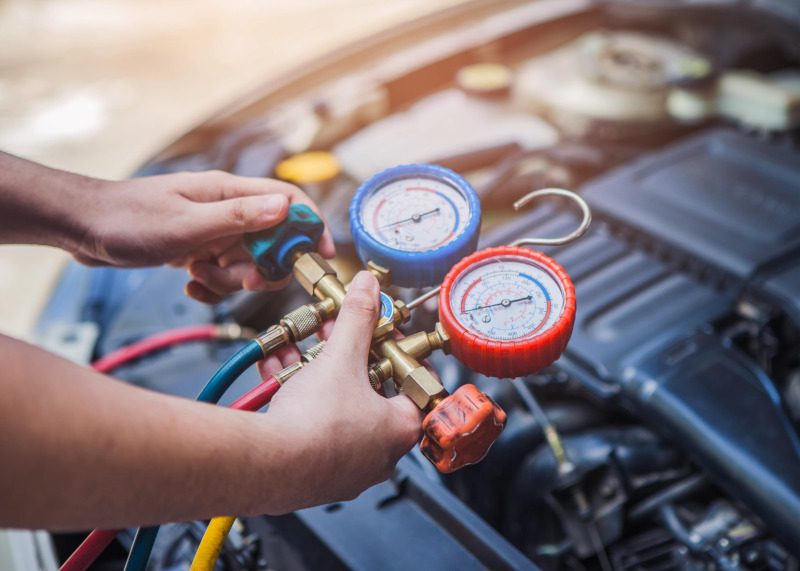Can You Fix Car AC By Yourself?
Car AC repair can be a daunting task for many car owners, especially if they don’t have a lot of experience working on cars. However, with some knowledge and the right tools, it is possible to fix your car’s AC system yourself. This article will provide an overview of the steps required to diagnose and fix your car’s air conditioning system. It will discuss the basic components of the system, what can go wrong, and how to properly diagnose and repair the system. Finally, it will provide some tips for working on your car’s AC system. With the right knowledge and tools, you can make sure that your car’s air conditioning system stays cool and comfortable all summer long.
Understanding Common Car AC Problems
When it comes to car AC problems, the best way to go about it is to first understand the common issues that can arise. From a lack of refrigerant to a blocked condenser, there are a variety of problems that can cause your car AC to malfunction. Knowing the most common car AC issues can help you decide whether it’s a problem you can fix yourself or if you should take it to a professional.
For starters, lack of refrigerant is a common issue. This is because of a leak in the system or because the system was overcharged. You can usually tell if the system is low on refrigerant if the air blowing out of the vents is warm. This is because the refrigerant is what cools the air before it gets to the vents. Another common issue is a blocked condenser. This can happen if debris, such as leaves, gets stuck in the condenser. This blockage will stop the air from flowing through the condenser, making it unable to cool the air.
It’s important to know the common car AC problems so you can make an informed decision on how to proceed. If it’s a minor issue, such as an empty refrigerant tank, you may be able to fix the problem yourself. However, if it’s a more serious issue, such as a blocked condenser, you should take it to a professional. Knowing the common car AC issues can help ensure that your car AC is in good working order.
Identifying the Problem
One of the most common summertime problems car owners face is a malfunctioning air conditioner. Before you can adequately address the issue, however, you first need to determine the cause. It could be something as simple as a blown fuse or a more complex issue like a refrigerant leak. Identifying the problem can be tricky, and it’s best to enlist the help of a mechanic if needed.
If the problem is a blown fuse, you can easily replace it yourself. Simply open the hood of your car and locate the fuse box. Open the box and inspect for any blown fuses. If you find one, you can easily replace it with a new one.
If the issue isn’t a blown fuse, it may be a refrigerant leak. This is a more complex issue, as it requires specialized tools and knowledge to find and repair the leak. Again, it is best to enlist the help of a professional mechanic if you cannot pinpoint the issue yourself.
Once you have identified the problem, you can then decide whether you want to repair the air conditioner yourself or hire a professional. Knowing the cause of the issue will help you make an educated decision and get your car back in working order in no time.
Prepping the Vehicle
Before attempting to diagnose or repair a car AC, it is important to properly prep the vehicle. This includes gathering the right tools and supplies and ensuring the area is clean and free of debris. It will also involve jacking up the vehicle and removing the dashboard panels to access the AC parts. It is important to make sure the protective wear is in place, such as safety glasses, gloves, and a face mask. Once these steps are complete, it is time to start diagnosing and fixing the car AC. With the right preparation and tools, a DIYer can save money and time by fixing the AC by themselves.

Diagnosing and Repairing the AC System
Hitting the hot summer days and turning on your air conditioning system only to find it doesn’t work is a nightmare. Unfortunately, this happens all too often, but the good news is that you can often fix the issue yourself. Knowing how to diagnose and repair the AC system can be a lifesaver.
Before you start, make sure you have the right tools and materials. You may need to purchase some specific items, such as a multimeter, to diagnose the system. You may also need to use a vacuum pump to evacuate the system and a pressure gauge to help determine the correct amount of refrigerant to be added.
Once you have the required materials, start by checking the power to the compressor. If the power is off, check the fuses and relays. If these are okay, then check the pressure of the system. If the pressure is too low, then you may need to add refrigerant.
Next, check the air conditioning hoses and connections for any signs of wear and tear or leaks. If any are present, replace the hose or connection. If the hoses and connections are in good condition, then you can move on to checking the compressor itself.
Make sure there are no loose or corroded wires and that the compressor is running properly. If there are any problems with the compressor, then it may need to be replaced.
Finally, check the condenser fan and make sure it is working properly. If it isn’t, then it may need to be replaced.
By following these steps, you can diagnose and repair the AC system yourself. While it may be a daunting task, it isn’t impossible and can save you time and money in the long run.
Refilling the Refrigerant
Car air conditioners need refrigerant to keep the air cold and comfortable. If your car’s AC isn’t working properly, one of the first steps you should take is to check the refrigerant level. In most cases, topping off the refrigerant is a straightforward task that requires no special tools or expertise.
However, it’s important to understand the risks associated with refilling the refrigerant in your car’s AC system. While the procedure is fairly simple, it can be dangerous if not done properly. To start with, you’ll need to purchase the correct type of refrigerant for your car. The wrong type can cause damage to the AC system. Additionally, you must make sure that the refrigerant is not contaminated. Otherwise, it could lead to costly repairs.
Once you have the right type of refrigerant, you need to make sure the AC system is sealed properly. Even a small leak can cause the refrigerant to escape, leading to a loss of cooling power. Finally, you must also make sure that the pressure is correct. Too much pressure can damage the system, while too little pressure can reduce the efficiency of the system.
By following these steps, you can safely and effectively refill the refrigerant in your car’s AC system. However, it’s important to remember that this is a job best left to professionals. If you don’t feel comfortable doing it yourself, you should always consult a qualified technician.
Finishing the Installation
Finishing the installation of a car AC unit is the final step in the process. It can be a daunting task for even the most experienced DIYer, so make sure you have the right tools and materials for the job. Start by attaching the compressor to the engine using the bolts and washers provided with the unit. Make sure to tighten the bolts carefully to avoid any leaks. Then, mount the condenser on the firewall and attach the hoses. Finally, you will have to connect the electrical components. This involves connecting the coil, the fan, and the pressure switches. All the wiring should be properly secured to prevent any damage. Once everything is connected, you can turn on the AC and check for any leaks or any other issues. With the proper tools and materials, this entire process should only take you about an hour to complete.
FAQs About the Can You Fix Car AC By Yourself?
1. Is it safe to fix car AC by yourself?
Yes, as long as you have the right tools and knowledge, it is safe to attempt to fix your car AC yourself. However, if you are not confident in your abilities, it is always best to seek the help of a professional mechanic or technician.
2. What are the most common car AC problems?
The most common car AC problems are low refrigerant levels, a blown fuse, a faulty compressor, a clogged expansion valve, or a failed blower motor.
3. How long does it typically take to fix car AC?
The amount of time it takes to fix a car AC varies depending on the complexity of the problem. Simple fixes may take only a few minutes, while more complicated problems can take several hours.
Conclusion
It is possible to fix car AC by yourself if you have the right tools and know-how. However, it is typically recommended that you take your car to a professional if you don’t have the necessary skills and knowledge. Fixing car AC can be a complex and time-consuming process, and if done incorrectly, it could end up costing you even more money in repairs.






